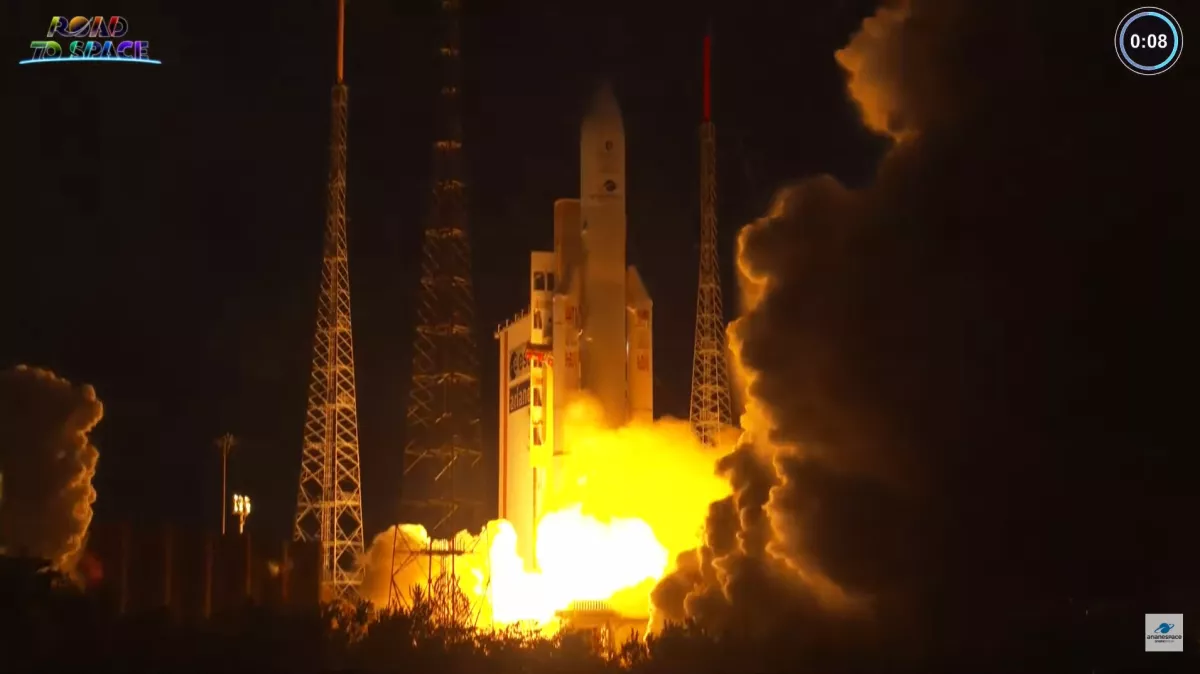A powerful European rocket launched a communications satellite of record-setting size from South America on Wednesday (Sept. 7).
An Ariane 5 rocket carrying the Eutelsat Konnect VHTS satellite lifted off from Europe’s Spaceport in French Guiana Wednesday at 5:45 p.m. EDT (2145 GMT). Just under 29 minutes later, the Ariane 5’s upper stage deployed the satellite into geostationary transfer orbit as planned.
Eutelsat Konnect VHTS (short for “very high throughput satellite”) is the largest spacecraft ever built by French-Italian aerospace manufacturer Thales Alenia Space, according to a mission description(opens in new tab) by Arianespace, the French company that operates the Ariane 5. Eutelsat Konnect VHTS tips the scales at 7 tons (6.4 metric tons) and is about 29 feet (8.8 m) tall.
The satellite packs a lot of performance into that large frame.
“With an instantaneous rate of 500 Gbps [gigabits per second], Eutelsat Konnect VHTS will provide high-speed internet access throughout Europe, in particular in isolated regions with low coverage, offering a service comparable to fiber optic networks in terms of performance and cost, thus making a significant contribution to bridging the digital divide,” Arianespace representatives wrote in the mission description.
“Eutelsat Konnect VHTS will also address the broadband connectivity needs of fixed and mobile telecommunications networks, on land, sea or in the air,” they added.
The satellite is designed to operate for at least 15 years in Earth orbit.
Wednesday’s launch, which was pushed back a day by bad weather, was the second of 2022 for the 166-foot-tall (50.5 meters) Ariane 5 and Arianespace’s third of the year overall.
The mission was one of just a handful remaining for the venerable Ariane 5, which debuted in the mid-1990s and has more than 100 missions under its belt. Arianespace is developing the rocket’s successor, the Ariane 6, which is expected to fly for the first time next year.




GIPHY App Key not set. Please check settings